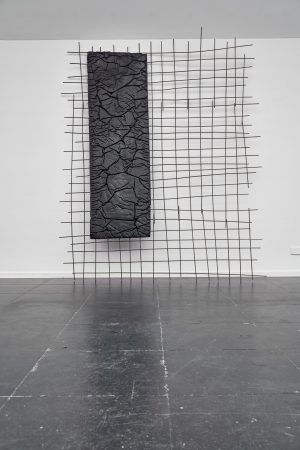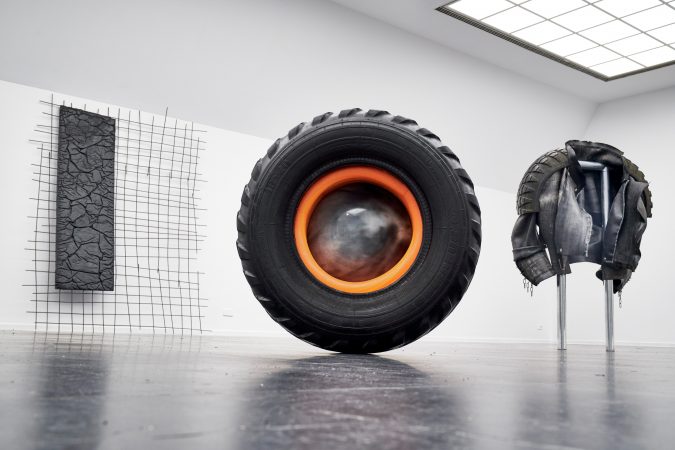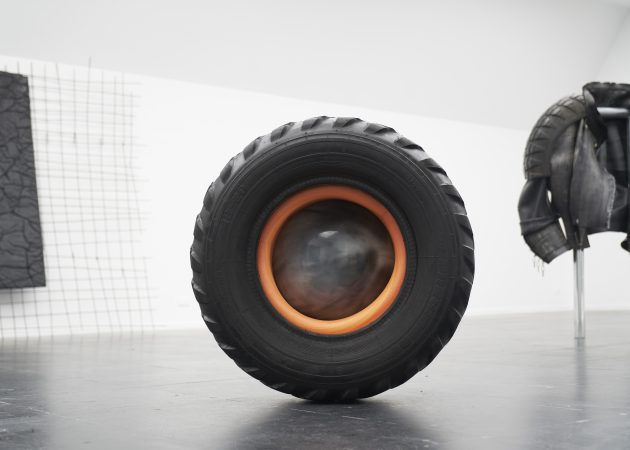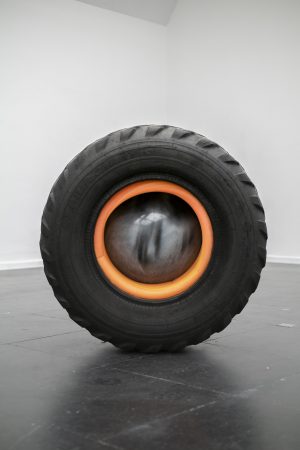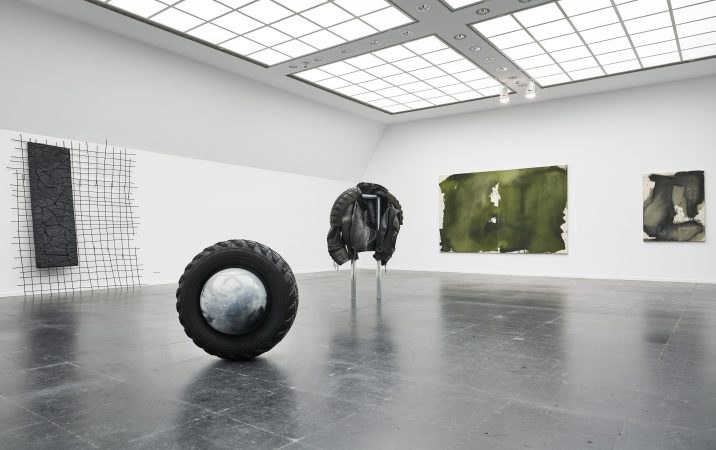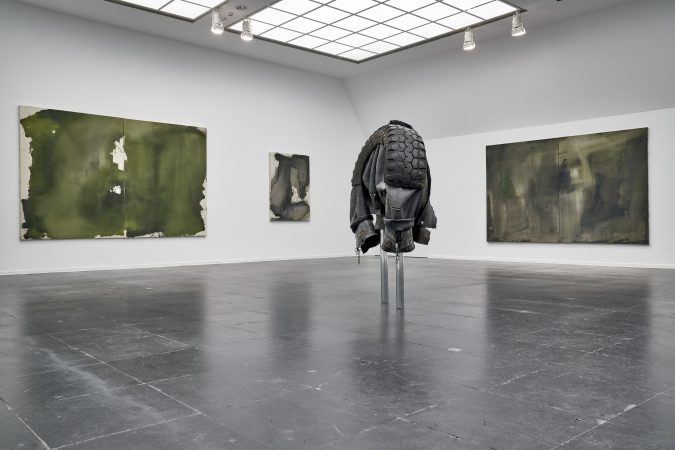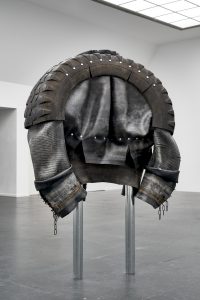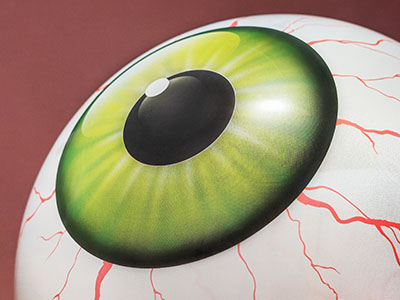Viviana Abelson
Viviana Abelson’s sculptures stem from the artist’s particular interest in the physical and alchemical potential of materials and their different possible combinations. Her works establish a vocabulary of forms and textures in which rubber, leather, and steel create bold connections.
At the center of Viviana Abelson’s artistic practice is the exchange of bodily and physical energies. Her works reflect the contrasting properties of materials, which vary between hard and soft, elastic and rigid. The necessary force she inflicts on the individual objects to shape them becomes apparent due to the increased ratios of tension and pressure. The artist’s body becomes the primary tool with which the sculptures are created.
The visual vocabulary of Viviana Abelson’s works includes materials and finishes that are mainly used in industrial manufacturing. These are mostly toxic substances that have been produced from natural resources from the ground and chemically processed into sellable products. A deep black hue unites them all, reminiscent of substances such as crude oil, which are not only used industrially, but also symbolically tell of our handling of the earth.
The point of departure for her sculptural form finding is the precise alchemical process that makes up these materials. Her artistic methods take up the processes that the materials have already gone through and bring them to the fore. For example, this is why she uses paraffin, which is extracted from crude oil in a multi-stage process, which in turn is a complex combination of different chemicals. The material behaves like wax, which can also be melted under heat, poured into a form, and left to harden. The artist enables these processes of change and allows new combinations to emerge through a repertoire of procedures such as firing, welding, sewing, melting, and gluing.
Viviana Abelson assumes an observational role when handling her materials. She is attentive to the properties and qualities of each material, and, when developing a form, follows the path they take. The heavy and powerful materials become fragile and are pushed to the limits of their durability. They thus become symbolic carriers of a powerful force that alludes to how political bodies are formed.
(Text: Franziska Nori, Dennis Brzek)


